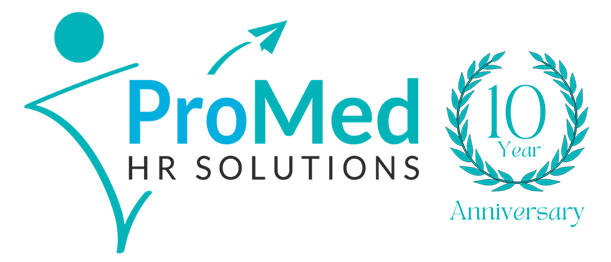Recent insights from the Canadian Association of Radiologists (CAR), the Canadian Association of Medical Radiation Technologists (CAMRT), and Sonography Canada, are highlighting the increasingly desperate situation unfolding concerning Canadian patients’ lack of reliable access to medical imaging and subsequent treatment.
Particularly since the onset of the COVID-19 pandemic, medical facilities across the country are experiencing significant pressure on their already-limited resources.
The report, entitled “Improving Access to Lifesaving Imagining Care for Canadians,” claims the only way forward is a multistakeholder approach to ensure sustainable access to lifesaving medical imaging services, focusing primarily on how increased investment is vital in the following areas:
- Installing up-to-date medical imaging equipment
- Implementing a medical imaging health human resources strategy
- Integrating technology and leveraging new advances in information technology, including artificial intelligence
Post-pandemic patient influx
The COVID-19 pandemic, paired with pre-existing healthcare crises, has created an inherent need for healthcare systems and workers to present a united front.
Due to a shift in focus and priority, the pandemic impeded thousands of Canadians’ access to a wide range of medical services, including surgery, therapies, diagnostic treatments and prompt medical imaging services.
Access to medical imaging was already a challenge pre-pandemic, resulting in excessive wait times, but the backlog incurred by the pandemic has significantly worsened these conditions.
According to the report, pre-pandemic, Canadians were waiting an average of 50 to 82 days for CT scans and up to 89 days for MRIs. However, during the pandemic, these waitlists spanned even longer, creating incredibly troubling scenarios for those requiring screening for life-threatening conditions, such as cancer.
The pandemic has prompted a domino effect where a high concentration of people are experiencing delayed diagnostic imaging and treatments, compounded by an ever-ageing population, resulting in prolonged delays for existing patients and a massive inundation of new patients.
These conditions are further exacerbated by a high number of patients requiring urgent treatment due to delayed diagnoses and worsening conditions. This influx places extreme pressure on radiology and medical imaging departments.
Investing in healthcare in more ways than one
While upgrading equipment is top of mind, additional resources are crucial in bolstering the joint unit response, namely, appropriate staffing of the respective departments and imaging units with qualified sonographers, and medical radiation technologists (MRTs).
Current numbers do not come close to meeting the growing patient need, and those currently occupying these positions are overworked and burnt out, which was already an issue before the pandemic, but has since reached dire levels.
In fact, according to a 2021 survey, there was an 80% jump in MRTs reporting signs of burnout.
Currently, there are simply not enough workers in the industry to support the increased number of patients requiring care, but the strategy to best meet these needs starts with providing healthcare teams with adequate human resources to ensure staff are properly supported.
Harnessing technology
Investment in medical imaging equipment in Canada is currently at a 20-year low. According to research from the Conference Board of Canada, 35% of medical imaging equipment is 10 or more years old.
This figure directly infringes on the “Golden Rules” instituted by the European Coordination Committee of the Radiological, Electromedical and Healthcare IT Industry (COCIR), which specifies that 30% of equipment should be no less than five years old and no more than 10% of equipment should be 10 years or older.
Operating outdated equipment not only has the potential of producing inaccurate results but is unreliable, requiring more frequent maintenance.
Putting patients first
While many may believe we are on the tail-end of the COVID-19 pandemic, the healthcare system will be dealing with the aftermath for years to come.
As previously stated, the pandemic caused rampant delays for countless patients requiring medical imaging and screenings for diseases such as cancer, with many told their initial or follow-up imaging appointments were considered “non-urgent.”
In fact, a recent study published by the Canadian Partnership Against Cancer predicts there will be over 20,000 additional cancer-related deaths in the next 10 years but that this number could be reduced by nearly 80% if cancer care, including essential diagnostic imaging services, were increased by 10% above pre-pandemic levels..
Due to backlogs and increased wait times, patients are understandably anxious about their access to potentially life-saving diagnostic imaging, prompting the Canadian Cancer Survivor Network to place increased pressure on governments, healthcare facilities, and cancer centres to invest in stronger cancer care services.
A way forward creates new opportunities
Rectifying the many problems experienced before, and exacerbated by, the pandemic will require a multifaceted approach, with one of the fundamental rules being that we must support radiologists and other medical imaging professionals, beginning with providing them with adequate human resources.
There are also not enough healthcare workers currently in the industry to support the significant influx of patients requiring care. According to a report commissioned by the Canadian Medical Association, job vacancies among healthcare practitioners increased by 92% between September and December 2021 alone compared to the same time period before the pandemic.
That said, healthcare staffing is more than just having the right amount of professionals to meet this influx. It’s also about having access to the people that healthcare facilities want to staff; dedicated, hardworking, experienced professionals.
Our team at ProMed HR Solutions understands these challenges from both employer and employee perspectives, placing us in the ideal position to not only find top talent, but guide them to positions that are right for them.
We specialize in medical staffing solutions to locate and place the best, most qualified, compassionate care providers in a wide assortment of specialized disciplines, including medical imaging, such as:
- MRI technologists
- Nuclear medicine technologists
- X-ray technologists
- Ultrasound technologists
- CT technologists
Our objective is to provide meaningful opportunities for dedicated medical imaging professionals to position them in a locum position that best suits their skills and goals.
To access the full report, please click here. If you are looking to hire locum specialists or join our locum team at ProMed HR Solutions, visit our website at www.promedhr.ca or call (833) 776-6336.







